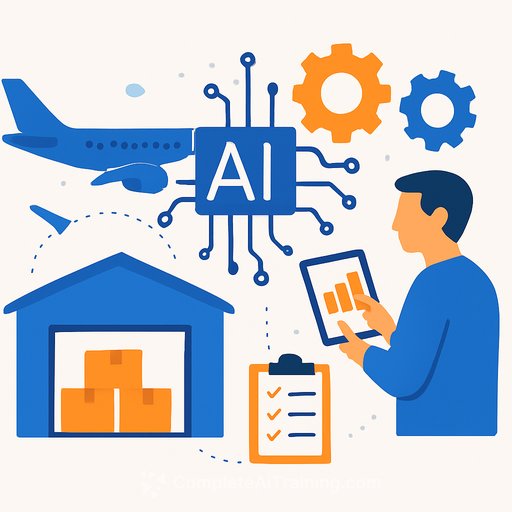AI moves into bancassurance support as Japan tightens the rules
Sumitomo Life is testing AI and digital tools to support its agent network as the industry shifts away from staff secondments. The goal is simple: reduce administrative drag, keep compliance tight, and help sales teams move faster. This isn't a lab experiment-it's an operational shift happening now.
- AI is being explored to assist agents amid stricter rules on staff secondments.
- Industry reforms follow scandals tied to employee loans and data misuse.
- Generative AI could replace on-site staff support in bancassurance networks.
- Insurtech adoption may help push Japan's life insurance market to $371B by 2029.
Why the shift: stricter rules end staff secondments
In September 2024, the General Insurance Association of Japan moved to ban loaning employees to partner sales teams, and the Financial Services Agency signaled tighter oversight. These changes follow cases of data leakage and misuse of bank information tied to secondees. By April 2026, secondments are expected to wind down across major carriers. Many are now redesigning support models to reduce risk and keep distribution partners comfortable.
For context, the industry body behind the ban is the General Insurance Association of Japan. The direction is clear: fewer human handoffs, more traceable, policy-driven systems.
What insurers are building instead
Japanese life insurers-Sumitomo Life, Nippon Life, Meiji Yasuda Life, and others-are testing agent enablement stacks powered by generative AI. These tools take on repetitive work, keep records clean, and provide audit-ready trails without embedding staff inside bank branches. The result: faster meetings, cleaner files, and fewer compliance surprises.
- Admin offload: meeting prep, client summaries, CRM updates, and case notes.
- Document intelligence: handwriting recognition, suitability documentation, form validation, and e-sign routing.
- Compliance-by-default: audit trails, consent capture, PII redaction, policy checks, and exception flags.
- Agent guidance: on-demand product Q&A, objection handling, and cross-sell prompts tied to suitability rules.
- Systems glue: integrations with CRM, policy admin, KYC, call recording, and knowledge bases.
Near-term playbook (next 90-180 days)
- Pick three high-friction use cases: suitability documentation, data entry, and meeting notes.
- Run a contained pilot with 50-200 agents in bancassurance and captive channels.
- Stand up policy guardrails: model access controls, redaction, and retention rules.
- Integrate with core systems first: CRM, policy admin, file storage, and e-sign.
- Create a short enablement loop: training modules, quick reference, and a feedback channel.
- Review weekly: measure time saved, error reduction, completion rates, and compliance hits.
What to measure
- Time per case: admin minutes saved per application and per client review.
- Quality: suitability completeness, documentation accuracy, and audit pass rates.
- Sales flow: appointment-to-application conversion and cycle time from lead to issue.
- Compliance: lowered data access exceptions and flagged event resolution time.
- Cost-to-issue: staff hours per policy and support tickets per 100 cases.
Market context and momentum
Analysts see direct written premiums rising from $275.8B in 2024 to $371.2B by 2029, a 4.7% CAGR. Insurers that modernize distribution faster will capture more of that growth, especially through bancassurance where process debt has been high. Some carriers have already partnered with global AI providers, and new entrants are localizing tools for Japanese workflows.
Leadership signals are aligned. During a leadership meeting in Bellevue, Washington with overseas subsidiaries, Sumitomo Life highlighted AI adoption as both a compliance response and a long-term modernization move. Expect sharper operating discipline, cleaner oversight, and better client experiences as these tools move from pilot to standard kit.
Risks and guardrails to get right
- Data boundaries: regional hosting, bank-grade access controls, and strict PII handling.
- Model behavior: retrieval-based answers from approved sources, no free-text speculation.
- Auditability: immutable logs for every suggestion, edit, and decision point.
- Human-in-the-loop: agent sign-off on all suitability and recommendation outputs.
- Change management: short, recurring enablement and clear escalation paths.
- Vendor checks: security posture, localization support, and clear uptime SLAs.
If you're leading distribution, ops, or compliance
Start with a narrow pilot that removes paperwork friction while improving traceability. Build the rails-policy controls, audit logs, and data boundaries-before expanding to broader sales guidance. Keep a weekly cadence on metrics and iterate ruthlessly based on agent feedback.
If your teams need structured upskilling on AI tools and workflows, see this practical catalog of programs for sales and operations roles: AI courses by job.
Your membership also unlocks:














